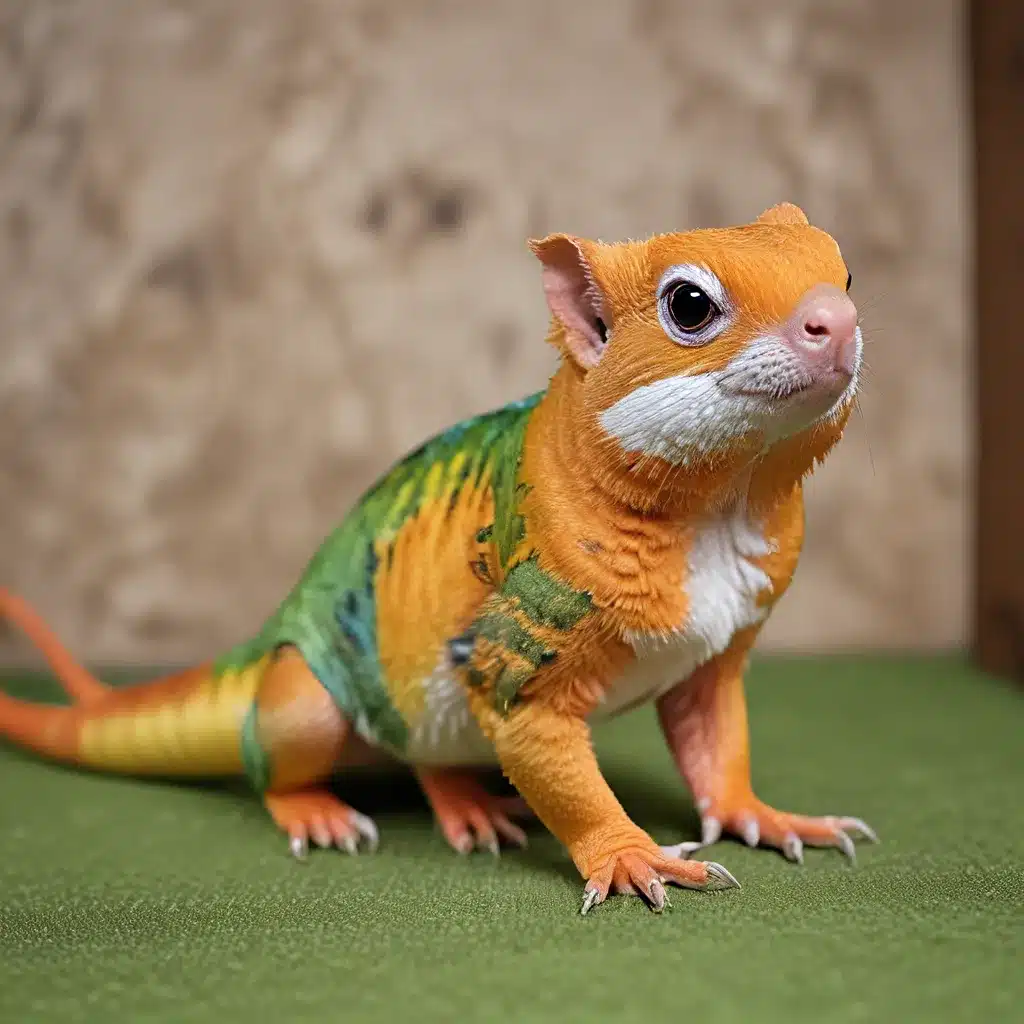
Exotic Excitement: Welcoming Your Furry (or Scaly) Friend
Ah, the thrill of bringing home a new exotic pet! It’s like embarking on a wild adventure, full of excitement, anticipation, and… well, a few butterflies in your stomach. After all, integrating a curious creature into your home is no small feat. But fear not, my fellow exotic enthusiasts! I’m here to guide you through the process, step-by-step, to ensure a smooth and successful introduction.
Settling In: Creating a Cozy Oasis
The first few days are crucial when introducing an exotic pet to its new abode. You want to ensure your furry (or feathery, or scaly) friend feels secure and comfortable, not overwhelmed by their unfamiliar surroundings. So, let’s start by setting up a designated “safe space” – a small, quiet room where your pet can retreat and acclimate at their own pace.
This room should be devoid of any potential hiding spots, save for a cozy crate or carrier. Equip it with the essentials: a litter box, food and water bowls, and a comfy bed or perch. Remember, cats don’t like to eat near their litter box, so keep those two areas separate.
Once your pet is settled in, it’s time to let them explore – but on their own terms. Resist the urge to overwhelm them with constant attention and affection. Golden Exotic Pets recommends giving your new companion “the time and space they need to get used to you and their new surroundings.” After all, they’ve just experienced a major disruption in their routine, and a little patience can go a long way.
Scent Swapping: Bridging the Familiar and the Unfamiliar
Cats, in particular, are all about scent. They use their powerful olfactory senses to navigate the world and establish their territory. So, when introducing a new feline friend to your home, swapping scents is an essential first step.
Start by placing a piece of your new pet’s bedding in the main living area, allowing your resident cats to sniff and get acquainted with the foreign aroma. In turn, rub a clean cloth on your new cat’s cheeks and place it in the designated “safe space.” This allows the cats to familiarize themselves with each other’s unique scent profiles before any face-to-face encounters.
Over the next few days, gradually increase the level of interaction by feeding the cats on either side of a closed door, with treats and praise as positive reinforcement. Slow and steady wins the race when it comes to building trust and rapport.
Supervised Introductions: Taking it Slow and Steady
Once the scent-swapping process is well underway, it’s time to start introducing your pets face-to-face. But remember, rushing this step can be disastrous. Cats, in particular, are notoriously territorial and may lash out if they feel threatened.
Begin by allowing your pets to see each other through a partially opened door, with you present to oversee the interaction. Offer treats and soothing words to create a positive association. If all goes well, you can gradually increase the opening until they can move freely between the rooms.
During these supervised sessions, keep a close eye out for any signs of aggression, such as hissing, growling, or swatting. If tensions start to escalate, immediately separate the animals and go back a few steps in the introduction process.
Remember, every pet is unique, and their adjustment timelines may vary. Some may warm up to each other within a few hours, while others may take weeks or even months to form a comfortable coexistence. The key is to be patient, observant, and responsive to your pets’ cues.
Establishing Boundaries: Respecting Personal Space
As your pets become more comfortable with each other, it’s important to ensure they each have their own designated resources – food and water bowls, litter boxes, beds, and hiding spots. This helps prevent any territorial disputes or feelings of competition.
Identify any areas of the home where one pet may be avoiding the other, and make sure that pet has a safe, secluded space to retreat to. Provide multiple perches, scratching posts, and other vertical elements to give both animals a sense of ownership and control over their environment.
Patience and praise are the cornerstones of a successful introduction. Celebrate every small victory, whether it’s a tentative nose-to-nose interaction or a shared nap in the sunbeam. With time, your pets may even develop a genuine fondness for one another, becoming the best of friends.
Exotic Harmony: Embracing the Adventure
Introducing an exotic pet to a new home can be a rollercoaster ride of emotions – for both you and your furry (or scaly) companion. But by following these tips for a gradual, thoughtful integration, you can create a harmonious environment where your pets can thrive.
Remember, every step of the way, your patience, observance, and adaptability will be crucial. Embrace the uncertainties, celebrate the small victories, and enjoy the journey of welcoming a new member to your family. After all, Golden Exotic Pets believes that the rewards of exotic pet ownership are well worth the effort.
So, take a deep breath, put on your explorer’s hat, and get ready to embark on an extraordinary adventure with your new exotic friend. The path to harmony may be winding, but the destination is a lifetime of unconditional love and adventure.

